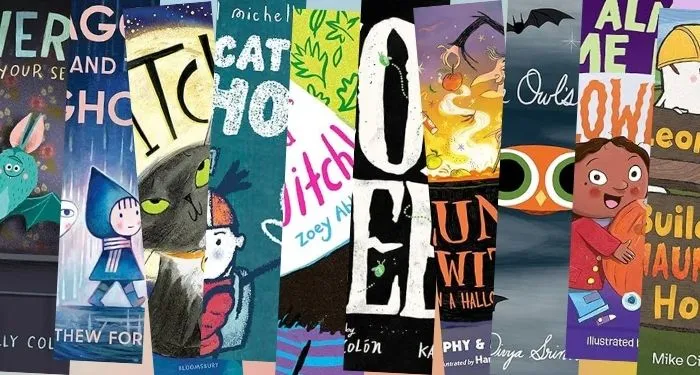Last month the NYR Online published Linda Kinstler’s dispatch from the official website of the Ukrainian president, where any resident of the country can submit a petition addressed to the government. Between 2015, when the website was launched, and Russia’s full-scale invasion of Ukraine in 2022, the forum served as a venue for requests as varied as increased intrastructure funding and more severe fines for littering. Over the last three years, however, the lion’s share of petitions have, Kinstler writes, “assumed an increasingly plaintive and grimly realist tone.” An overwhelming number of petitioners write with “pleas for fallen loved ones to be granted posthumous military honors,” turning the forum into “a place where deaths are recorded, a site of public mourning.” The Ukranian president is constitutionally required to consider any peitition that receives 25,000 signatures within ninety days.
Kinstler is a junior fellow at Harvard’s Society of Fellows and the author of Come to This Court and Cry: How the Holocaust Ends, about the limits of latter-day legal remedies for the Holocaust. She is a contributing writer at The New York Times Magazine and Jewish Currents.
Last week, Kinstler and I corresponded about the challenges of working with an “archive” of contemporary material, the American military parade that took Washington, D.C. by force in June, and her next book.
Dahlia Krutkovich: How did you find these petitions in the first place? Did anything in them surprise you?
Linda Kinstler: A friend in Kyiv posted a link to the petitions on social media several months ago, urging her friends to read and sign them. I had never encountered the website before and was immediately struck by the tone and nature of the pleas. Many countries have websites where citizens can sponsor and sign petitions, but those countries have not been at war for the last eleven years, and their citizens do not live under martial law. I realized that, in these appeals to the president, people were also offering glimpses of their own experiences in wartime, and that there was a communal and defiant spirit to their entreaties. They offered an alternative and often intimate view of civilian life, a record of war as described by those who have lost the most. I felt it was important to let the petitions speak for themselves as much as I could, to preserve the language of the petitioners and to amplify their own words.
You write that these petitions constitute a “living archive of wartime Ukraine,” a description I take seriously considering your extensive work in the musty archives of the former Soviet Union. How does working with a living archive differ from working with a historical one? Were there particular sensitivities you felt you had to keep in mind?
One of the books I most admire is Denis Kozlov’s The Readers of Novyi Mir: Coming to Terms with the Stalinist Past (2013), which Yuri Slezkine assigned in a Soviet history seminar I took in graduate school. Novyi Mir (New World) was the most important literary journal of its time; it was, for example, where Solzhenitsyn’s One Day in the Life of Ivan Denisovich was first published in 1962. Kozlov collected letters that Soviet citizens sent to the editors during the thaw of the 1950s and 1960s, the period of liberalization Nikita Khruschev oversaw after Joseph Stalin’s death in 1953. After many years of silence and repression, millions of people returned home from the gulag and spoke of what they had survived; it suddenly became possible to discuss the traumas of the past in literary and cultural forums. (Ilya Ehrenberg’s novel The Thaw,for which the period is named, was published in Novyi Mir in 1954.)
Most people wrote to Novyi Mir only once in their lives, and, using their words, Kozlov observed how they were trying to make sense of the major changes happening around them. I thought of his book as I read through the online petitions—here too most people will only submit once or twice in their lives, to, for example, request state honors for a relative killed in action or to ask for help locating a missing soldier. Others write to suggest changes to martial law, to plead for more and better defenses, or to amend the law to provide better care for prisoners of war. All of these letters are expressions of citizenship, calls for recognition, and, in a sense, expressions of mutual care. They too are trying to make sense of their new reality.
I am not sure that working with a living archive differs substantially from a historical one—in both instances, you have the obligation to remain as faithful as possible to the writers’ intentions as much as you can discern them. That said, we do not have the benefit of hindsight when it comes to petitions written during an ongoing war. When we read the plea of a mother asking for help locating her missing son, we are keenly aware that he is still missing, and that he’s only one of thousands of soldiers whose whereabouts remain unknown.
Your previous essay for us reported on the military parade that celebrated the 250th anniversary of the US Army’s founding and—somewhat unofficially—Donald Trump’s seventy-ninth birthday. Was this your first time at a military parade? Were attendees eager to talk to the press?
The vast majority of people I approached were open to speaking with me, though a handful of interviewees wanted to know the political bent of The New York Review as a precondition of our conversation. I was most impressed with the small group of people who showed up to protest both the military expo and the parade on the National Mall. They told me they felt that, as citizens, it was important to express that they had not consented to this display of lethal force in their capital. On my way out I spoke with a woman from D.C. who asked to remain anonymous. I approached her after I spotted her walking down the sidewalk alone, holding a sign protesting the cost of the parade. On either side of her, people in MAGA hats cheered for the soldiers marching by. She said she had gotten more jeers for her sign on the way to the parade than at the event itself. It was an individual act of protest in what felt like hostile territory—an act of political courage that I fear may become rarer in the years to come.
As for the parade itself, watching the tanks roll by made me think back to 2015, early in Russia’s war on Ukraine, when destroyed Russian tanks were put on display right outside St. Michael’s Golden-Domed Monastery in central Kyiv. There too children climbed on top of them and posed for photos, but the tanks in Kyiv were incinerated, symbols of an enemy’s defeat in a violent conflagration, while the ones in D.C. were pristine, pure violent potential.
I kept thinking about Chekhov’s gun, the dramatic principle that a pistol introduced in the first act must go off in the third. When you watch a military parade, you have to wonder when and where the lethal arms will be deployed, in whose name and for what cause.
Broadly, these two essays try to discern civilian opinion on military mobilization, pride, and sacrifice. What parallels or resonances do you see between them? Did working on them in quick succession illuminate anything for you?
I want to understand how people orient themselves around the political forces that shape their everyday lives. In Ukraine, the military is far and away the most trusted public institution—many of the petitions express support for the army above all and ask the president directly to do more to support soldiers on the front lines. At the D.C. parade, many people I spoke with were army veterans. For some, support of the military and support for the president were one and the same, but that was by no means the rule. Even when the costs and causes of Ukraine’s fight are hotly debated, there is no question about who or what the army is fighting for. I don’t think the same could be said of the US military right now, and the parade brought the tension between loyalty to the executive and loyalty to the country into sharp relief: Was it for the president’s birthday, or the army’s? Was it a celebration of the military, or of Trump and his supporters? There is a deliberate and dangerous ambiguity at play here.
Your next book seeks to explore the cultural and legal concept of oblivion. Could you tell us more about that project?
My first book, Come to This Court and Cry: How the Holocaust Ends, was about how law can be manipulated to rewrite history, to dislodge established proofs, and to fuel a certain strain of denialism. It tells the story of how a Nazi named Herberts Cukurs, who was assassinated by Mossad in 1965, came to be the subject of a contemporary pretrial investigation in his home country of Latvia. The prosecutor in charge of the case effectively determined that, because the Holocaust happened so long ago, it is no longer possible to accurately ascribe responsibility—despite reams of survivor testimony and documentary evidence of Cukurs’ participation in the Nazi genocide. My first book is an effort to understand how this situation came to be, an exploration of the relation between law and history.
While I was researching that project, I learned about “acts of oblivion,” which utterly fascinate me because they elide easy description. These were laws usually passed as part of a package of measures lawmakers hoped would help societies move past wrongs that could neither be forgiven nor forgotten. They required the restitution of stolen properties, the re-instatement of rights, and the prosecution of perpetrators, yet also acknowledged that punishment could not continue in perpetuity. Oblivion isn’t a live legal idea anymore, but when it was most in use, it was deployed to stitch societies back together in the aftermath of war: the most famous “act of oblivion” restored the British monarchy in 1660; after the Revolutionary War several acts of oblivion offered royalists the chance to remain on American soil; the very first use of the term was an attempt to save Caesar’s assassins from immediate execution.
I became captivated by the idea that law could self-consciously recognize the limits of its own power, and I set out to find all the examples of legal oblivion that I could. It shows up in the strangest places. In the early laws of marriage and divorce in the US, for example, there was a rule that if someone committed adultery and then spent a night with their spouse, the infidelity was considered “obliterated.” But it also appears in numerous early modern peace treaties and in diplomatic exchanges with Indigenous peoples, where mutual pledges to bury past wrongs in oblivion shaped the network of diplomatic alliances in early America. Historically, citizens, writers, and politicians have reached for acts of oblivion when they had lived through terrible cataclysms––colonization, war, occupation, revolution––and were trying to find their way toward a new future. The book is my attempt to document these efforts and to understand what legal oblivion was, how it has shaped the narration of history and offered people a new vision of the future in moments when all else had been lost.



















 English (US) ·
English (US) ·